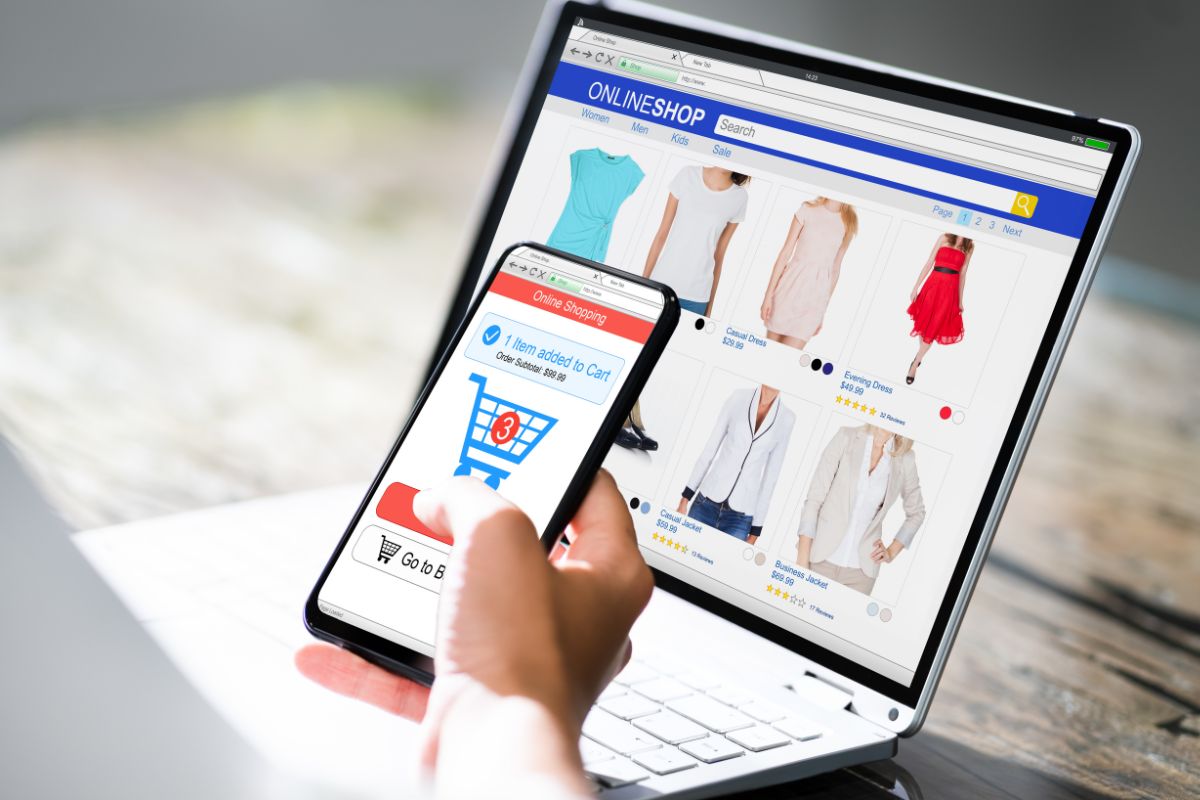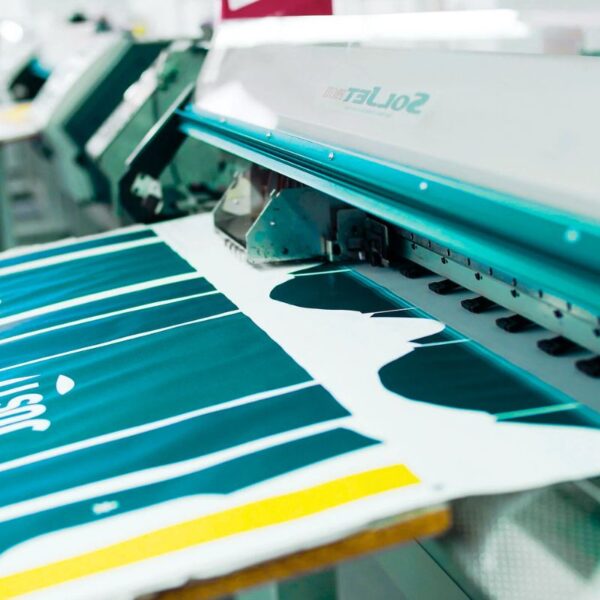Merchandising is a key strategy used by retailers to promote and sell products effectively. It involves presenting goods in a way that attracts customers and enhances their shopping experience.
From creative displays to strategic pricing, merchandising plays a vital role in influencing your buying decisions and boosting sales for businesses.
Table of contents
- Fundamentals of Merchandising
- Merchandising Strategies and Planning
- Pricing and Promotions
- Enhancing Customer Experience
- Marketing and Promotion Techniques
- Evaluating Merchandising Effectiveness
- Trends and Future of Merchandising
- Frequently Asked Questions
- What are the main responsibilities of a merchandiser in the retail industry?
- How does merchandising differ between fashion and textile sectors?
- Can you describe the role of merchandising within marketing strategies?
- What are some common examples of effective merchandising practices?
- Why is merchandising considered vital for a business’s success?
- What are the various types of merchandising and their key characteristics?
As a consumer, you might not realize that every aspect of a store’s layout and product arrangement is designed with you in mind. The way items are showcased can make you feel more drawn to them, prompting you to spend more time—and money—while shopping.
Effective merchandising not only captures your attention but also helps retailers build brand loyalty and improve their overall marketing efforts.
In today’s competitive market, understanding the principles of merchandising can benefit both shoppers and retailers. Recognizing these techniques might help you make more informed choices, while businesses can use this knowledge to enhance customer connections and drive sales.
Fundamentals of Merchandising
Merchandising is essential for driving sales and enhancing the shopping experience. This section covers the key concepts of merchandising, the role it plays in retail, and the various types that exist.
Understanding Merchandising
Merchandising refers to the strategies retailers use to promote and sell products. This includes organizing products in-store and online to attract customers.
Effective merchandising involves understanding consumer behavior and using that knowledge to create appealing displays.
In retail, the main goal is to stimulate purchasing. You need to consider how products are presented, the layout of the store, and the overall shopping environment.
Good communication with teams is vital to ensure all aspects align with the brand’s vision.
The Role of Merchandising in Retail
Merchandising plays a crucial role in retail by directly impacting sales and customer satisfaction. It involves several activities, such as product placement and price strategies, all aimed at maximizing profit.
Retailers use visual merchandising to create an inviting atmosphere. This can include window displays, signage, and the arrangement of products on shelves.
By engaging customers visually, you encourage more purchases.
Additionally, strong merchandising supports your brand image. When you present your products clearly and attractively, customers are more likely to remember your brand and return for future purchases.
Types of Merchandising
There are several types of merchandising, each serving a unique purpose:
- Retail Merchandising: This focuses on in-store displays and product positioning.
- Visual Merchandising: This type emphasizes aesthetics and the sensory experience through display techniques.
- E-commerce Merchandising: For online stores, it involves optimizing product images and descriptions to drive online sales.
- Channel Merchandising: This focuses on delivering tailored product presentations across different sales channels.
Each type has its strategies and techniques. By understanding these different approaches, you can enhance customer engagement and boost sales, no matter the setting.
Merchandising Strategies and Planning
| Merchandising Role | Key Responsibilities | Impact on Retail Success |
|---|---|---|
| Product Selection | Choosing the right products based on trends and customer demand. | Ensures best-selling items are stocked, maximizing sales. |
| Pricing Strategy | Setting competitive and profitable pricing for products. | Balances affordability and profitability. |
| Inventory Management | Managing stock levels to prevent overstocking or stockouts. | Reduces waste and optimizes cash flow. |
| Visual Merchandising | Designing store displays and product placements. | Attracts customers and enhances shopping experience. |
| Promotions & Discounts | Planning sales, discounts, and special offers. | Drives customer engagement and increases conversions. |
| Customer Insights & Trends | Analyzing customer behavior and market trends. | Helps adapt product offerings to consumer preferences. |
| Omnichannel Strategy | Aligning in-store and online merchandising strategies. | Provides a seamless shopping experience across platforms. |
| Supplier & Vendor Relations | Negotiating with suppliers for better pricing and product quality. | Improves profit margins and ensures product availability. |
| Brand Consistency | Ensuring merchandising aligns with the brand image. | Strengthens brand identity and customer loyalty. |
| Seasonal Planning | Introducing new collections based on seasons and trends. | Keeps inventory fresh and encourages repeat purchases. |
Effective merchandising strategies and careful planning are vital for retail success. You need to focus on aligning your goals with customer needs while managing inventory wisely. Strategies can enhance sales and improve the shopping experience for your customers.
Developing Merchandising Strategies
Creating successful merchandising strategies is key to reaching your sales goals. You can start by identifying your target market and understanding their preferences.
Consider using these strategies:
- Upselling and Cross-Selling: Encourage customers to buy related items or higher-end products.
- Promotions and Discounts: Use limited-time offers to create urgency.
- Visual Merchandising: Design attractive displays that draw customers’ attention.
Evaluate your strategy’s effectiveness through customer feedback and sales data. Adjust your approach based on what resonates with shoppers.
Effective Planning for Retail Success
Planning is essential in ensuring you meet your sales targets. Begin by setting specific goals for your merchandise. These should be measurable and align with your overall business objectives.
- Sales Forecasting: Analyze past sales trends to predict future demand.
- Budget Management: Allocate funds wisely for each product category.
- Seasonal Planning: Prepare for holidays and events to maximize sales opportunities.
Regularly review your plans to refine and adapt as necessary. Staying flexible will help you respond to market changes effectively.
Inventory Management and Turnover
Managing inventory efficiently helps maintain healthy turnover rates. This means selling products quickly and reducing excess stock. Here are several methods to improve inventory management:
- Regular Audits: Conduct frequent inventory checks to track stock levels.
- Automated Systems: Use software tools to monitor sales and restock items as needed.
- Optimize Stock Levels: Balance having enough product to meet demand without overstocking.
Focus on keeping your inventory fresh and relevant to your customers. Lower turnover can lead to wasted resources and lost sales opportunities. Use sales data to inform your decisions about what to stock.
Pricing and Promotions

Pricing and promotions are essential tools for attracting customers and boosting sales. By implementing effective pricing strategies and promotional tactics, you can enhance your brand’s visibility and competitiveness in the market.
Creating Competitive Pricing Strategies
To create a successful pricing strategy, you need to analyze the market and understand your competition.
Competitive pricing involves setting your prices based on what others charge for similar products. This strategy helps ensure you stay relevant and appealing to your target audience.
Consider using various pricing tactics, such as value-based pricing, where you set prices according to perceived value.
Additionally, psychological pricing can play a role, like pricing items at $9.99 instead of $10. These methods attract more customers by making prices appear lower while maintaining your profitability.
The Impact of Discounts and Promotions
Discounts and promotions can significantly influence customer behavior. Offering limited-time discounts encourages urgency, leading to quicker buying decisions.
For example, a “buy one, get one free” offer can attract new customers and increase sales volume.
Different types of promotions can serve your business goals. Seasonal promotions can clear out inventory, while loyalty discounts can encourage repeat purchases.
It’s important to track the effectiveness of each promotion to understand what resonates with your audience and optimize your future campaigns.
Upselling and Cross-Merchandising
Upselling and cross-merchandising are often overlooked but important strategies in pricing and promotions.
Upselling involves encouraging customers to purchase a higher-end product or upgraded service. This can increase your average sale price without the customer feeling pressured.
Cross-merchandising focuses on selling related products together. For example, if a customer buys a barbecue grill, you can suggest charcoal and accessories.
This strategy not only boosts sales but also enhances the shopping experience by providing completeness to the purchase.
Both of these tactics rely on effective pricing and promotional strategies to convey value to the customer.
Enhancing Customer Experience
| Aspect | Strategy | Impact on Customer Experience |
|---|---|---|
| Personalization | Offer product recommendations based on browsing history and preferences. | Makes customers feel valued and increases purchase likelihood. |
| Visual Merchandising | Use engaging displays, lighting, and store layout to highlight key products. | Creates an appealing shopping environment and boosts sales. |
| Omnichannel Experience | Ensure seamless integration between online and in-store experiences. | Provides convenience and consistency across platforms. |
| Easy Navigation | Organize products clearly in categories (both online and offline). | Reduces frustration and enhances shopping efficiency. |
| Interactive Features | Use AR/VR for virtual try-ons and interactive kiosks. | Makes shopping more engaging and fun. |
| Fast & Flexible Payments | Provide multiple payment options (credit, BNPL, UPI, digital wallets). | Enhances convenience and reduces abandoned carts. |
| Efficient Checkout Process | Minimize checkout time with self-checkout, fast billing, and mobile POS. | Reduces waiting times and improves customer satisfaction. |
| Quality Assurance | Maintain high product quality with thorough checks and clear return policies. | Builds trust and encourages repeat purchases. |
| Responsive Customer Support | Offer chatbots, live support, and quick query resolutions. | Enhances customer confidence and brand loyalty. |
| Loyalty & Rewards Programs | Introduce points, discounts, and exclusive offers for repeat customers. | Encourages long-term engagement and brand advocacy. |
Creating a positive customer experience involves several key elements, including effective store design, visual merchandising, and strategies for building customer loyalty. Each factor plays a vital role in attracting customers and encouraging them to return.
Store Design and Layout
Your store design and layout directly impact how customers navigate and interact with your products. A well-thought-out layout guides customers through the space, making shopping intuitive.
You should place high-demand items near the entrance to draw customers in.
In addition, consider using different zones for various types of products. This approach can help customers easily find what they’re looking for while also encouraging impulse purchases.
Use clear signage to navigate the space and ensure a smooth customer journey.
Importance of Visual Merchandising
Visual merchandising enhances in-store shopping by making products appealing through strategic displays. Eye-catching window displays can attract foot traffic, while in-store arrangements encourage longer visits.
Use color, lighting, and texture to highlight key products and promotions. For example, create themed displays that tell a story about your merchandise.
This allows customers to visualize how they might use the products in their daily lives, increasing customer satisfaction.
Cultivating Customer Loyalty
Cultivating customer loyalty is essential for long-term success. One effective method is to create a welcoming atmosphere where customers feel valued.
Training staff to provide excellent service can make a significant difference.
Additionally, consider implementing a loyalty program that rewards repeat customers with discounts or exclusive offers.
This not only encourages repeat business but also strengthens the emotional connection between customers and your brand. A satisfied customer is more likely to return and recommend your store to others.
Marketing and Promotion Techniques

Effective marketing and promotion techniques are essential for driving sales in retail. These methods can capture customers’ attention and create lasting impressions. Below are key strategies to enhance your merchandising efforts.
Advertising and In-Store Displays
In-store displays are crucial for grabbing attention and improving customer experience. Eye-catching window displays can draw people into your store.
Use signs that highlight promotions or seasonal items to pique interest.
Types of displays include:
- End Caps: Placing products at the end of aisles to boost visibility.
- Interactive Displays: Allowing customers to touch and try products.
- Thematic Arrangements: Aligning products with holidays or trends for better relevance.
Investing in advertising through flyers, social media, or local publications can also increase awareness of your promotions. Combining these strategies creates a unified message that guides customers to your products.
Harnessing the Power of Online Marketing
Online marketing is vital in today’s digital shopping environment. Use social media platforms to connect with your audience directly.
Share engaging content like product demos, customer reviews, and promotions to build interest.
Email marketing is another effective tool. Sending targeted emails with discounts or new product announcements can encourage repeat business.
Utilize digital data to analyze customer preferences and behaviors. This helps you customize your marketing strategies based on what sells best, leading to increased online traffic and sales.
Integrating Omnichannel Retailing
Omnichannel retailing focuses on providing a seamless shopping experience across all platforms. This means your customers can engage with your brand in-store, online, or through mobile devices.
Ensure your store displays and online promotions are consistent. For example, a promotion in-store should match the one online to avoid customer confusion.
Utilizing data analytics can help you track customer interactions across different channels. This reveals insights about shopping habits and preferences, allowing you to tailor your offerings effectively.
Incorporating omnichannel strategies ensures that you meet your customers where they are, enhancing their shopping experience and driving sales growth.
Evaluating Merchandising Effectiveness
| Metric | Evaluation Method | Why It Matters? |
|---|---|---|
| Sales Performance | Track revenue, units sold, and average transaction value. | Measures the direct impact of merchandising strategies. |
| Sell-Through Rate | Calculate the percentage of stock sold versus total inventory. | Identifies fast-selling and slow-moving products. |
| Gross Margin Return on Investment (GMROI) | Assess profitability by comparing gross margin to inventory cost. | Ensures merchandising is financially viable. |
| Customer Engagement | Monitor website traffic, foot traffic, and dwell time. | Indicates how well merchandising attracts customers. |
| Conversion Rate | Track the percentage of visitors who make a purchase. | Shows how effective displays and layouts are in driving sales. |
| Stock Turnover Ratio | Analyze how frequently inventory is sold and replenished. | Helps maintain fresh stock and avoid overstocking. |
| Customer Feedback & Reviews | Collect feedback through surveys, online reviews, and social media. | Provides insights into customer satisfaction. |
| Promotional Success | Measure the impact of discounts, bundles, and seasonal offers. | Helps refine future merchandising campaigns. |
| Return & Exchange Rates | Track the percentage of returned products. | Identifies quality or sizing issues affecting sales. |
| Competitor Benchmarking | Compare pricing, product selection, and visual merchandising with competitors. | Helps stay competitive in the market. |
Assessing how well your merchandising strategies work is key to driving sales and enhancing customer satisfaction. You can use various methods to gauge effectiveness, focusing on metrics that provide clear insights into performance.
Measuring Sales and Foot Traffic
One of the primary ways to evaluate merchandising effectiveness is by tracking sales metrics. This includes monitoring total revenue, sales per square meter, and turnover rates.
A high sales per square meter indicates efficient use of space, while turnover can signal how quickly products sell.
Additionally, foot traffic analysis offers insights into customer behavior. Using tools like footfall counters can help you assess which areas draw shoppers in.
More traffic often leads to more sales, so understanding patterns can help you optimize product placement.
Customer Feedback and Satisfaction
Customer feedback is essential for measuring merchandising success. Surveys and feedback forms provide direct insights into your customers’ experiences.
You can ask about product variety, pricing, and overall shopping experience.
Positive feedback often correlates with higher customer satisfaction and repeat visits. Use Net Promoter Score (NPS) surveys to understand if customers are likely to recommend your store.
Low scores may highlight areas needing improvement, influencing both customer satisfaction and brand recognition.
Leveraging Digital Data and Customer Behavior
Digital data offers a wealth of information on customer behavior.
Retail analytics tools can track online and in-store purchases, allowing you to identify trends and preferences.
By analyzing this data, you can adjust inventory levels and promotions in real-time.
Utilizing customer relationship management (CRM) systems helps you segment your audience.
You can tailor marketing strategies based on this segmentation, which drives sales and increases customer loyalty.
Moreover, understanding online browsing patterns can inform your in-store merchandising decisions—making your overall strategy more effective.
Trends and Future of Merchandising

Merchandising is evolving rapidly due to innovations in product presentation and changing cultural customs.
You should be aware of how these shifts impact retail and e-commerce, helping you adapt to customer preferences.
Innovations in Product Merchandising
Product merchandising is changing with technology and consumer expectations.
Retailers are integrating digital tools to improve product selection and design. For example, augmented reality (AR) allows customers to visualize products in their own space before purchasing.
Additionally, data analytics are becoming crucial. They help businesses understand customer behavior and preferences.
By analyzing buying patterns, you can stock items that appeal most to your target audience.
Key innovations include:
- AR and VR experiences
- Personalized marketing based on data
- Interactive displays in stores
Adapting to Changing Cultural Customs
Cultural customs significantly influence merchandising strategies. As consumers become more diverse, retailers must adapt their approaches to product design and selection.
For instance, you need to consider local customs, values, and trends to resonate with different demographics.
This includes offering products that reflect cultural significance or seasonal celebrations. More brands are looking to localize their offerings to build stronger connections with customers.
Examples of adaptation:
- Seasonal products based on local holidays
- Diverse representation in advertising
- Sustainability practices that align with consumer values
Predictions for E-commerce and Retail Chains
The future of merchandising is heavily linked to e-commerce growth.
Retail chains will increase their online presence, blending digital and physical shopping experiences. This omnichannel approach makes it easier for you to find what you need across platforms.
Expect to see more personalized shopping journeys, where recommendations and product displays adapt to your browsing habits.
Retailers will continue to invest in technology to enhance user experiences, focusing on fast shipping and easy returns to attract online shoppers.
Future trends to watch:
- Enhanced AI for customer interaction
- Seamless transitions between online and in-store shopping
- Greater emphasis on customer feedback to guide product offerings
Frequently Asked Questions
Merchandising plays a crucial role in retail, influencing how products are presented and marketed. This section addresses common questions that explore the responsibilities of merchandisers, differences across sectors, and effective practices in the field.
What are the main responsibilities of a merchandiser in the retail industry?
A merchandiser is responsible for product selection, pricing, and presentation in stores.
You ensure that products are displayed effectively to attract customers. Analyzing sales data and market trends is also part of your role to optimize inventory levels.
How does merchandising differ between fashion and textile sectors?
In fashion, merchandising focuses heavily on trends, seasonal changes, and brand image. You need to stay updated on what is popular.
In textiles, the emphasis may be more on functionality, quality, and durability of products rather than just aesthetics.
Can you describe the role of merchandising within marketing strategies?
Merchandising complements marketing by enhancing product visibility and appeal.
You use displays, pricing strategies, and promotions to attract customers. This alignment helps you communicate brand messages and encourages purchases.
What are some common examples of effective merchandising practices?
Effective merchandising practices include eye-catching window displays, well-organized shelves, and engaging in-store promotions.
You might also use signage and special product placements to guide customer flow and highlight important items leading to higher sales.
Why is merchandising considered vital for a business’s success?
Merchandising directly influences consumer behavior and buying decisions.
When done correctly, it enhances the shopping experience and can boost sales significantly. This makes it a key component for achieving business goals and maintaining competitiveness.
What are the various types of merchandising and their key characteristics?
Different types of merchandising include visual merchandising, retail merchandising, and digital merchandising.
Each type has distinct characteristics, such as the focus on aesthetics for visual merchandising or online tactics used in digital merchandising.
Understanding these types helps you tailor your strategies effectively.



